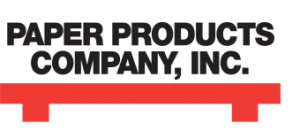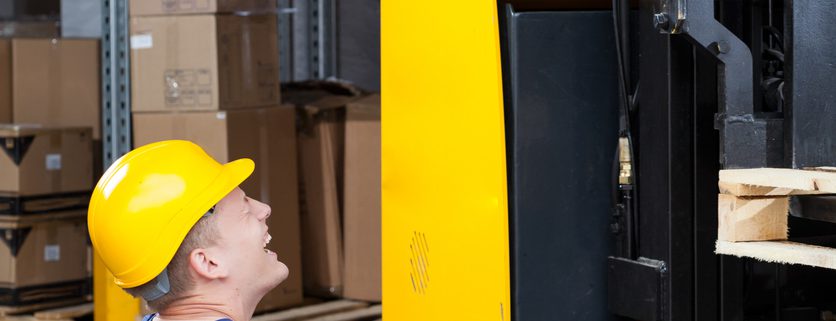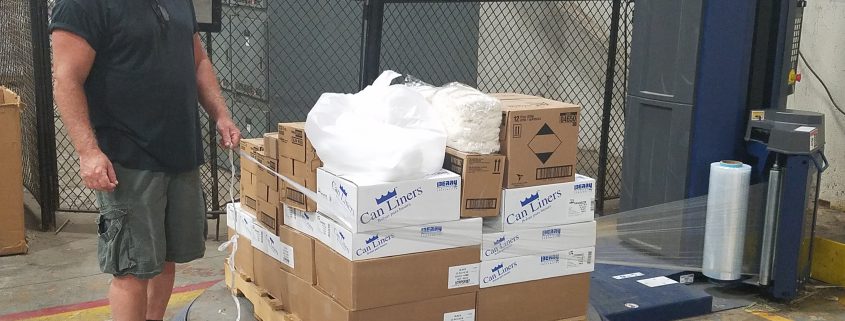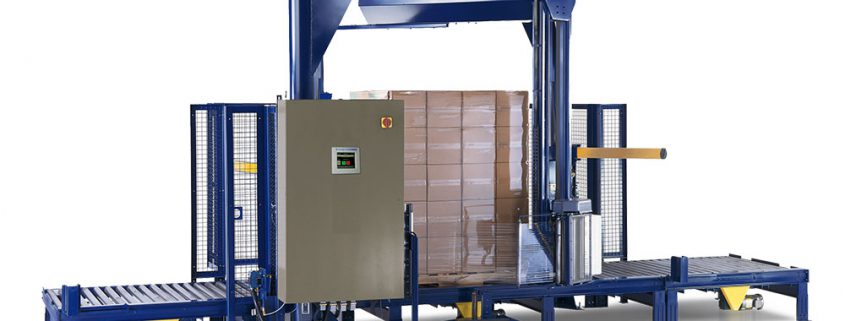When Forklifts Attack! – Safety Concerns in Dodgy Forklift Traffic Conditions
/in Blog /by Gary PaulIn my 28 years of touring both manufacturing and warehouse facilities, I occasionally found myself in a few places that made me nervous for my personal safety. For example, I visited plants that were processing highly dangerous chemical compounds and mills that put me in close proximity to molten metals and behemoth, heavy machinery. I even spent some time in an explosives production facility. However, over all those years, the one place that I thought was easily the most dangerous place was a certain food distribution facility.
In the nineties, I did some consulting in a large packaged food warehouse, where a crew of human order pickers flew around on stand-up forklifts, building pallet loads of mixed product to fulfill customer orders. Though I’ve been in scads of similar operations, this place had a number of factors that made it particularly hazardous. The most evident threat was a multitude of fast moving electric pallet lifts seemingly coming from all directions. Further, these relatively silent lifts were piloted by young men who appeared focused on speed; they didn’t seem to pay much attention to the two pedistrians in their midsts. It was like real-life Frogger!
Other factors piled on to make this place seriously perilous – the lighting was dim; the aisles were narrow and there were piles of various goods haphazardly heaped hither and thither further restricting operating space and sight lines. Also unsettling – the employee host leading me through this place was wide-eyed and clearly on guard himself, his head on a swivel, sometimes quick-stepping to get of the way of lifts bearing down on us.
Concerns about fork truck traffic safety are well-founded. A 2010 OSHA training program reports that “Powered industrial truck accidents cause approximately 100 fatalities and 36,340 serious injuries in general industry and construction annually.” THOSE ARE SOME PRETTY SERIOUS NUMBERS.
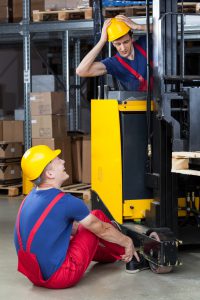
Forklifts are very heavy, fast moving machines that often sacrifice driver visibility for their practical purpose – moving pallet loads of goods from one area to another. Just like the cars we drive – they are only as safe as their human drivers, and shoddy maintenance can render them harder to handle and contribute to catastrophic accidents. It is worth noting, that like the collection of vehicles on today’s highways, you will find many older, poorly maintained machines in operation all over the place.
There are a couple of other factors that contribute to the dangerous nature of forklift traffic in warehouse settings…
- Forklift operators in order-picking roles are often required to repeatedly mount and dismount their vehicles thoughout their operating ranges.
- Warehouse settings offer a wide, unique set of operator distractions – like those related to order-picking, and those contending with many other operators – mounted and dismounted.
- Many warehouses have extensive high-stacked racking systems that are often separated by narrow aisles.
In my next posting, let’s drill down on those specific challenges to forklift operators in warehousing, and look at the various means to make them safer for employees – mitigating risk and loss.
In the meantime, can you think of a workplace that you felt was particularly unsafe? Please share!
Industrial Packaging 101: What is the Difference between Shrink Wrap and Stretch Film
/in Blog /by Gary PaulBoth phrases typically describe the same thing – plastic wrap used to contain pallet loads for safe shipping, also known as pallet wrap.
The phrase stretch film is a more apt descriptor, since pallet wrap stretches, not shrinks; and is the term universally accepted in the industry, including the manufacturers of the film. The shrink wrap moniker is a bad nickname from a bygone era – kind of like Meat Head or Opie.
Film for wrapping pallet loads is engineered to stretch out as it is applied to the load. Further, the film has elasticity – also called memory – built in, much like a rubber band. This tendency to return to form serves to squeeze the load or contain it with inward-facing force.
So, the film isn’t actually shrinking. In fact, the term shrink wrap further confuses the situation because there is actually quite a lot of shrinkable film used in packaging – but they are rarely used for pallet containment. Shrink film is another subject for another blog. As far as stretch film goes, there are about a gazillion varieties. Some films are designed to be applied by hand, and some by machine.
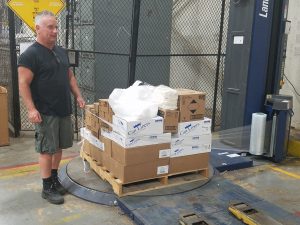
Machine Film typically comes in 20″ or 30″ widths. Its made to be stretched mechanically out to high levels.
When considering what stretch film is best for your pallet loads, keep in mind the following …
- Containing pallet loads for overland shipping is important. When a load topples or otherwise fails, the related costs can be enormous.
- When used properly, stretch film is inexpensive – don’t skimp. Most loads can be very securely wrapped for a material price of well less than $1.50.
- Heavier loads require greater containment forces – this can be achieved using heavier films or more wraps of lighter films OR through machine adjustments when using a modern stretch wrapper.
- Pallet loads most commonly fail because the load shifts off of the pallet. Stretch film can be effectively applied to mitigate this risk greatly. Use stretch film to lock the load to the pallet.
- Modern pallet wrapping MACHINERY can provide a much more effective, efficient and safe means to contain loads for shipping.
If you need help sorting this out, let us know. It’s what we do!
LOOK AT US!
/in Blog /by Gary Paul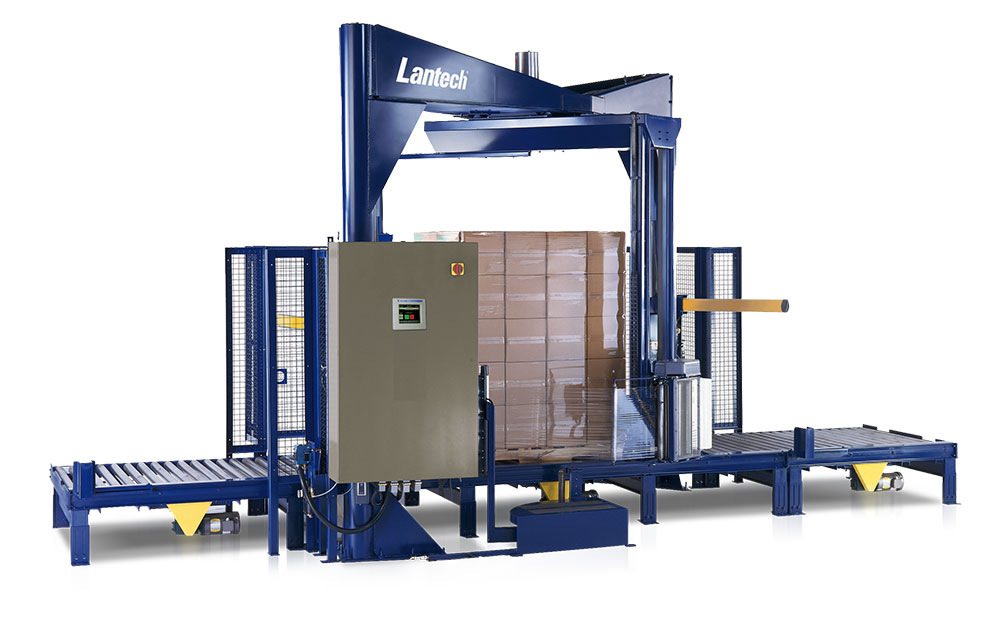
If you are interested in industrial packaging equipment, please consider Paper Products Company. We have good, experienced people to assist you through the whole equipment implementation process: research and discovery; procurement and delivery; installation, start-up and training; maintenance and optimization.
Please visit our newly redesigned website paperproductsequipment.com that is dedicated to the equipment side of our business.
Watch our blog for new innovations, application success stories, plus much more packaging-related content.
